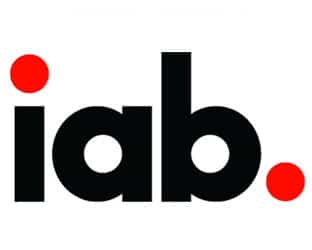There’s a “FANG” that’s captured the attention of marketers, advertisers, and Wall Street analysts. The acronym represents the four big Goliaths of the digital universe: Facebook, Amazon, Netflix and Google (or, more accurately, parent Alphabet), with many in Silicon Valley already now using the acronym “GAFA.”
Just how significant these companies are in the scope of total U.S. advertising dollars was punctuated by the Interactive Advertising Bureau (IAB)‘s Q2 2017 report, which Pivotal Research Group Senior Research Analyst/Advertising Brian Wieser has thoroughly examined.
The takeaway: Digital advertising grew at a much higher clip than TV did in Q2.
As noted by Wieser, new data from the IAB indicate that digital advertising grew 23% and accounted for 40% of U.S. advertising in the second quarter.
That’s “well above TV’s 30% level during the same period,” Wieser says.
The growth rates are remarkable, he adds. But, they also highlight risks around digital media owners — and Facebook and Google in particular — saturating digital media budgets in the years ahead.
Eight of the past nine quarters of IAB data have indicated growth rates exceeding 20%.
“At $20.8 billion in total ad revenue, the segment now represents 40% of U.S. advertising versus our estimates for all advertising during the quarter,” Wieser notes. “That’s well above the $16 billion we estimate went to television during the same period.”
Pivotal estimates require guesses around the gross revenue that Facebook’s audience network generates and the share of Google’s non-advertising businesses that originate within the U.S., Wieser says.
Based on that, Pivotal calculates that the digital advertising industry’s two biggest players were responsible for collecting 83% of all digital ad growth in Q2. That’s less than Pivotal’s estimate of 88% of all growth for 2016, but is still a significant share, Wieser says.
“Combined, they accounted for 73% of all digital advertising in the U.S. during 2Q17, up from 70% in Q1 2016 and 63% in Q2 2015,” Wieser continues. “If these estimates are correct, digital advertising that did not go through Facebook or Google performed reasonably well during Q2, growing by 15%.”
That beats the 8% growth rate observed in Q1 ’17 and a 7% growth rate observed during all of 2016.
Wieser takes care in note that the estimates “are highly sensitive to assumptions around how fast or slow Google’s non-advertising businesses are growing in the U.S.”
Of equal importance, presuming that Google does not provide PwC, who produces spending estimates on the IAB’s behalf, with actual revenue data, PwC would undoubtedly need to be making similar estimates to determine the sector’s growth, Wieser adds.
“While the numbers can be viewed positively for Facebook and Google in particular, as they suggest that digital advertising continues to go from strength to strength, with every passing period that the sector produces growth rates exceeding 20% (eight of the past nine quarters),” he continues. “This means we get closer to a point in time where growth for digital media owners approaches the level we would expect to see for the overall advertising industry. Although the presence of digital media owners makes it more possible for some types of advertisers to emerge (app developers in particular) and supports some incremental growth, the bulk of the advertising ‘pie’ is constrained, because in our view, absolute advertising budgets are rarely tied to pure ROI-based metrics as many investors might expect them to be. Budgets are set with some correlation to a company’s revenue, and in turn those budgets are somewhat closely to the health of the broader economy, and personal consumption expenditures in particular.”
To illustrate what’s left in terms of growth potential, Wieser offers the following scenario.
“If we assumed that total advertising grew by 3% annually each year and digital advertising grew by 15% annually, by 2025 all advertising would be digital, and all growth would match the industry’s overall (likely low single digit) rate,” he says. “If we assumed the same 3% overall growth rate and digital continued to grow by 20%, digital advertising would eradicate everything else around 2022 — only five years from now — before hitting low single digits.”
Don’t fear, broadcast media executives: Wieser has no faith in these scenarios actually coming to fruition.
“Other media, television in particular, will be somewhat resilient,” he says. “We assume a gradual deceleration for digital media owners is more likely rather than any other scenario.”
The bigger point: Digital media owners are gradually approaching the point of saturating available digital budgets.
“This helps explain why digital media owners – and Facebook in particular – have become more aggressive in finding ways to capture television advertising budgets in recent periods,” Wieser concludes. “For similar reasons, Google is also counting on YouTube to help capture growth from this source, too. International markets provide ongoing opportunities for growth as well, of course, but even in those markets we think similar trends are not far removed from those we observe in the U.S.”
RBR+TVBR





